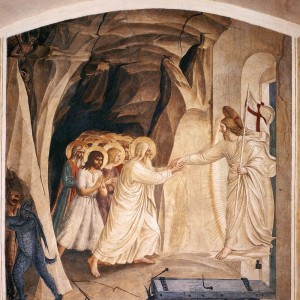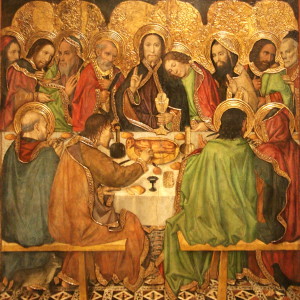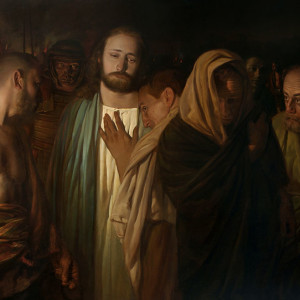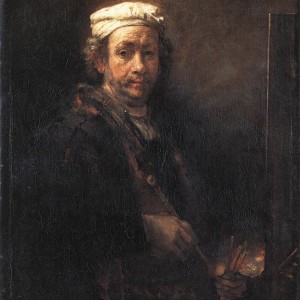Why is Abraham our father in faith? Because of his primacy and because of his intensity – an intensity we see most clearly in the shocking account of the Sacrifice of Isaac.
Tag: Saints
Holy Saturday Soul Booster
In my opinion, Holy Saturday is the hardest day of Holy Week to really “enter into.” Is it a day of mourning? Not exactly. A day of rejoicing? Again, not exactly. The best description I’ve heard it is that it is a day of “quiet hope.” Here are some aids to cultivate a spirit of quiet hope as we make the massive transition from Good Friday to Easter Sunday, and as we commemorate Christ’s “harrowing of hell.”
Good Friday Soul Booster
“I opened the sea before you, but you opened my side with a spear.” Today is Good Friday, the worst and best day in history. How does one enter into the incomprehensible mystery that man killed God? These aids might be a start.
Holy Thursday Soul Booster
Today is Holy Thursday, the night of the Last Supper, and therefore the anniversary of both the Eucharist and the priesthood. It’s here that Jesus celebrates the first Mass, and then commissions his disciples to do the same. And it’s here that the Passion of Christ truly begins. Here are a few resources to help as you enter into Triduum, the holiest time of year.
Spy Wednesday Soul Booster
Today is Holy Wednesday, often known in the West as “Spy Wednesday,” because it’s the day that commemorates Judas’ betrayal of Christ. And it’s a good reminder that (a) we, too, betray Jesus regularly; and (b) Jesus loves even those who betray and disown Him.
3 Reasons to Love St. Joseph
Today, as you might imagine, is a special day for me. It’s my “name day,” the feast day of St. Joseph. One aspect of celebrating your name day is to know and love your namesake Saint. So let me share with you three things that I love about St. Joseph:
Rembrandt and the Queen of Heaven
Rembrandt van Rijn (1606-1669) is the greatest and most famous painter of the Dutch Golden Age. While he’s perhaps most famous for paintings like The Return of the Prodigal Son, he also is believed to have painted between 40-100 self-portraits (there’s a huge range in the number, because several of these might have been painted by his students). Many of these… Continue reading Rembrandt and the Queen of Heaven
What the Earliest Recorded Marian Prayer Reveals About the Early Church
The earliest recorded prayer to Mary, dating to about 250 A.D. says: “Beneath your compassion, We take refuge, O Mother of God; do not despise our petitions in time of trouble, but rescue us from dangers, only pure, only blessed one.” Here’s what that tells us about the early Church.
Did St. Josaphat Die in Vain?
392 years ago today, Saint Josaphat, an Eastern Catholic bishop in Ukraine, was dragged out of his rectory and murdered by the Eastern Orthodox townspeople that he was trying to lead back into union with the Roman Catholic Church. The Church does not hesitate, in her prayers, to say that he poured out his… Continue reading Did St. Josaphat Die in Vain?
Did St. Paul Use the Deuterocanon?
The Catholic Deuterocanon – the set of seven books accepted by Catholics and rejected by Protestants – clearly teaches the morality of praying to the Saints and praying for the souls of the deceased. But can we trust that the Deuterocanon is canonical? Evidence from Romans 9 — a favorite passage amongst many Protestants — strongly points to a “yes” answer.









